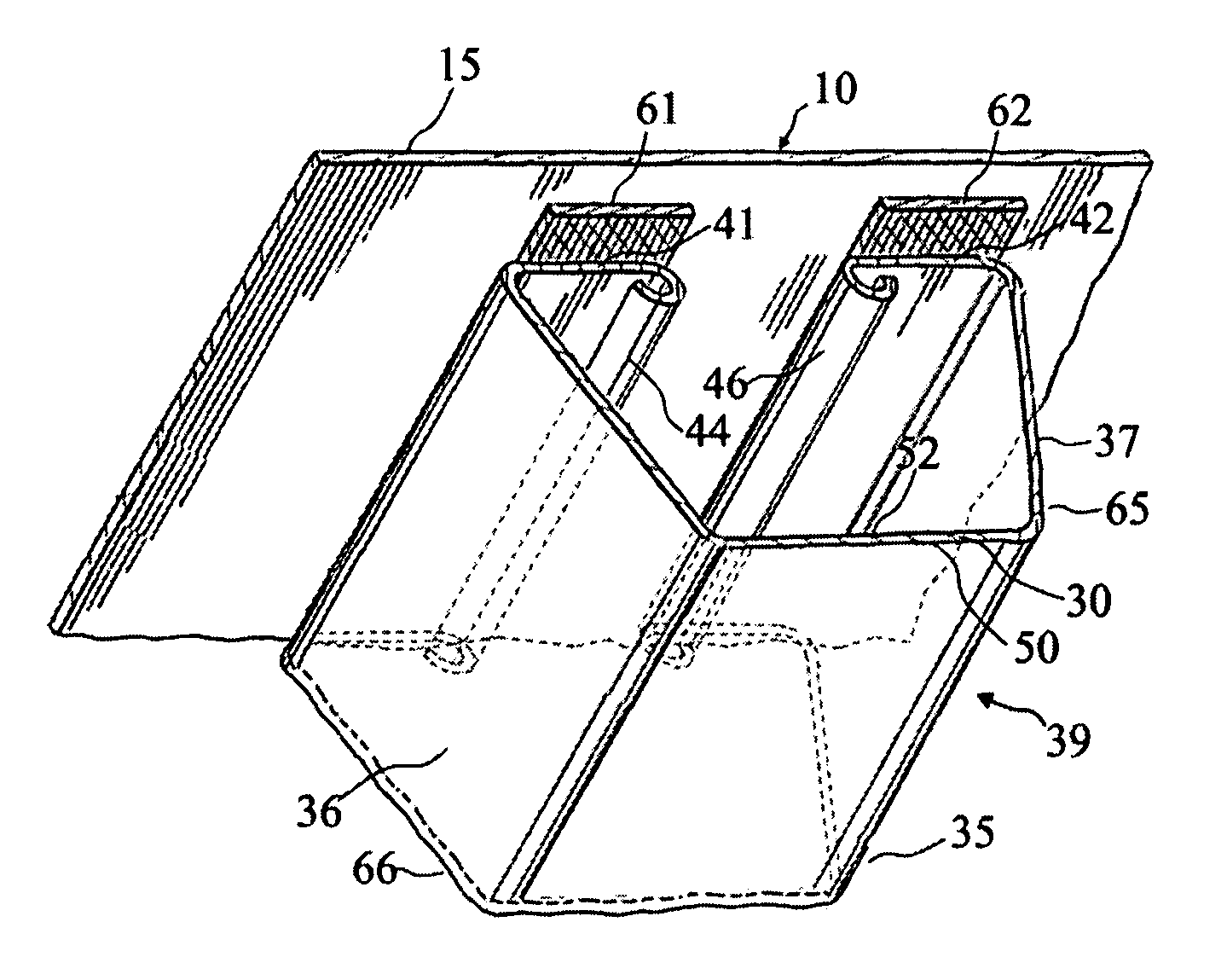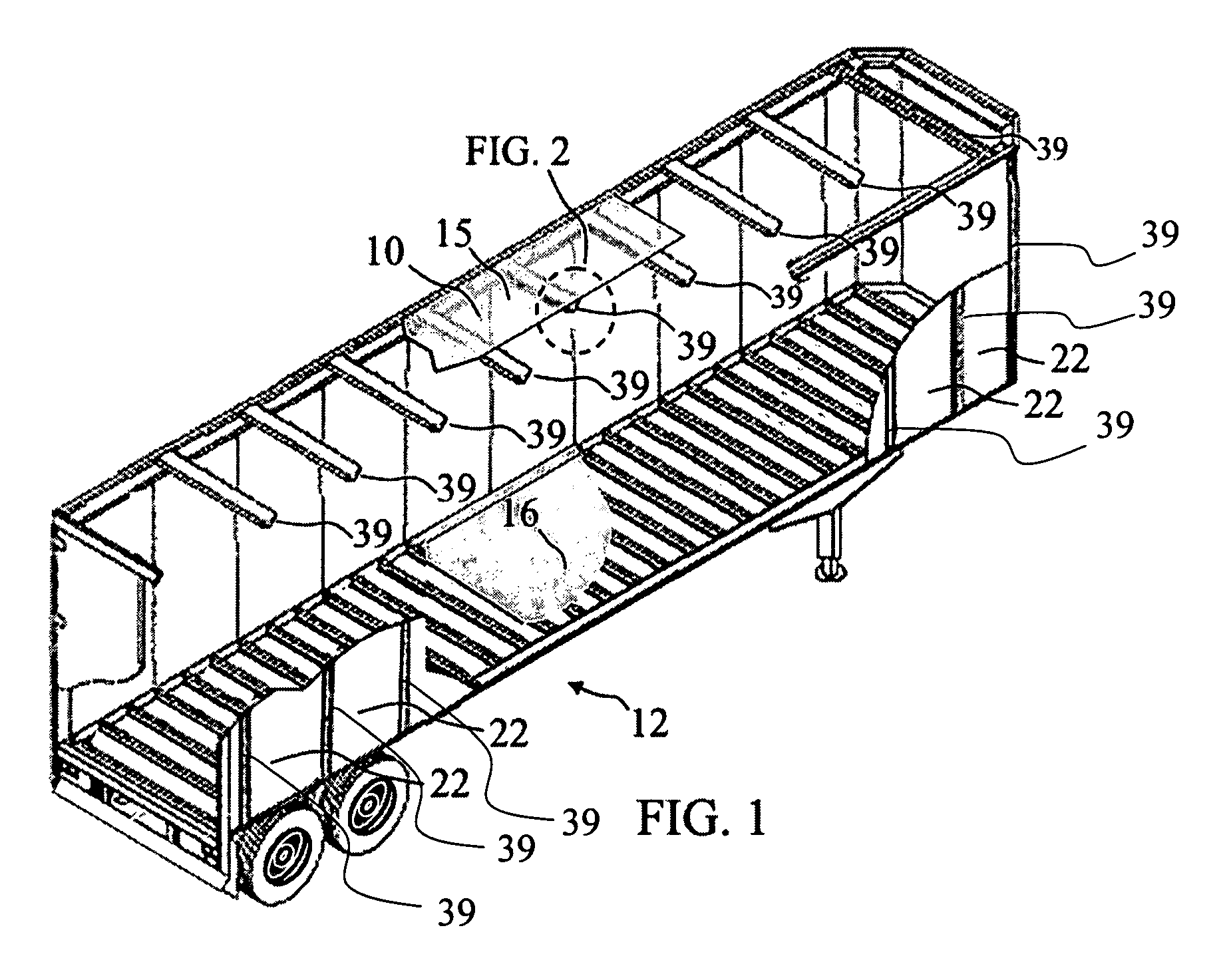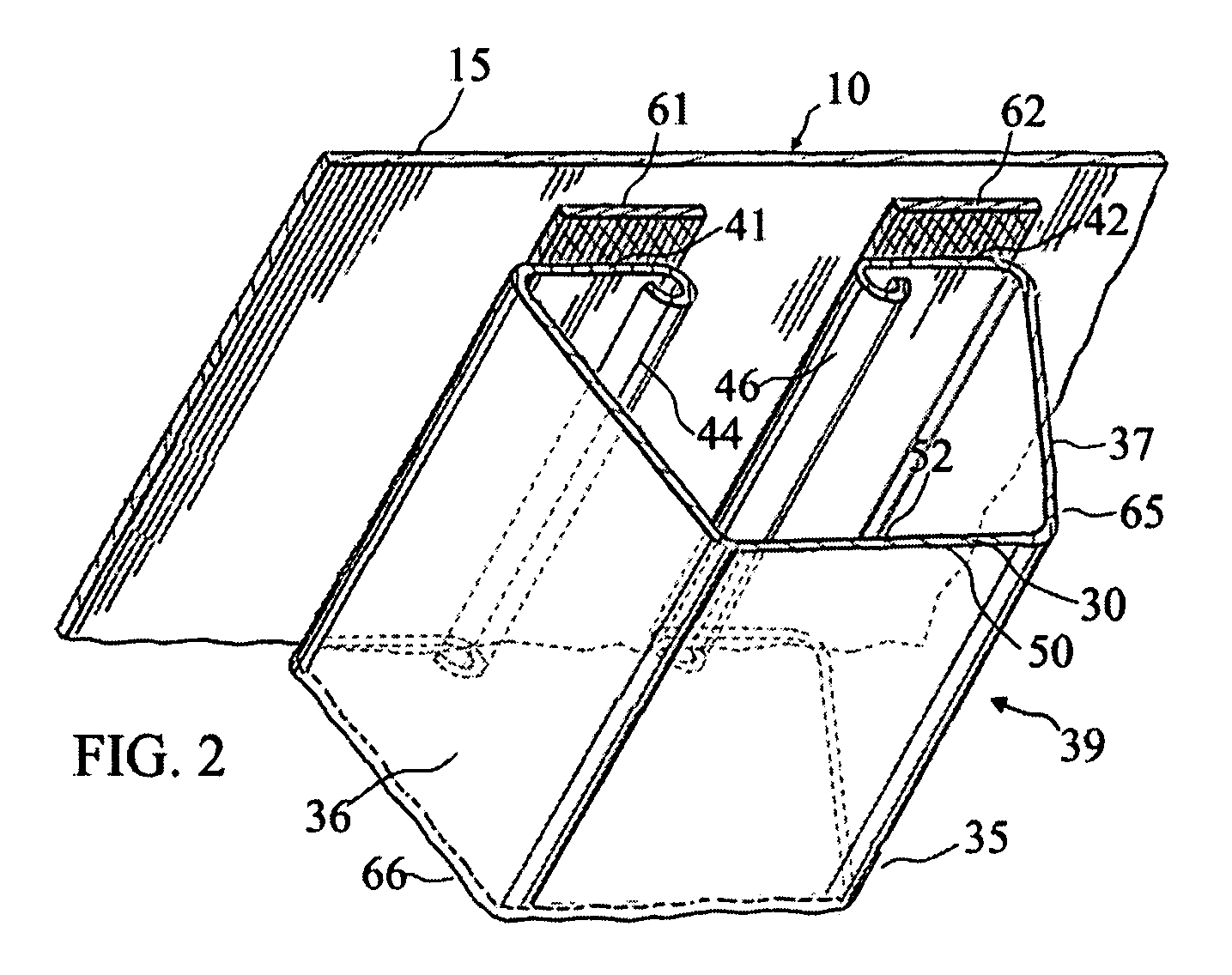Stiffeners for utility trailer structural panels
a technology for supporting structures and utility trailers, applied in the directions of superstructure connections, transportation and packaging, doors, etc., can solve the problems of unsatisfactory approach, early failure of the system, and large tooling and handling costs, and achieve the effect of effective addressing edge stress concentration and cost-effective manufacturing
- Summary
- Abstract
- Description
- Claims
- Application Information
AI Technical Summary
Benefits of technology
Problems solved by technology
Method used
Image
Examples
embodiment 110
[0061]FIGS. 5A and 5B show two embodiments of alternative tubular edge features to that of FIG. 5. Each of these two embodiments is directed to a bead or curl in which the outer diameter to thickness ratio of the tubular edge is larger than about 13. In these cases, additional stiffening of the tubular edge may be desired. As shown in embodiment 110, a smaller elliptical curl 107 inside the tubular edge feature 54A is shown in FIG. 5A, and includes a “curl flange”116 with associated thickness t, radius R11, and angle theta 11 in order to further stabilize tubular edge 54A. For ratios of radius R11 to thickness of 3.5 or less, and for angles theta 11 between 30 and 120 degrees in the positive or negative direction, a special strengthening effect is obtained which causes the curl flange 116 to act together with tubular edge 54A so that the entire edge is substantially strengthened and stabilized against warping. This added stabilization is thus a very useful extension of the capabilit...
embodiment 113
[0062]As an alternative to the curl within a curl of FIG. 5A, FIG. 5B shows embodiment 113 having a lip 114 of length L11 that may be applied to the free edge of the curl 54B, such as is shown in FIG. 5B. In this case the angle theta 12 is between 30 and 120 degrees for best results, and the length L11 of lip 114 is between 1 / 5 and 4 / 5 of the average of edge tube dimensions L12 and L13 for best results. Longer lips may be used, but usually with limited additional benefits over the benefits of the range given.
[0063]A typical utility trailer panel may be of dimensions being 102 inches by 48 inches. The stiffeners are preferably secured to the panel, each being made of steel and having a thickness of 0.036 inch with W1 and W2 being 0.6 inch and W3 being 1.2 inches. Diameter d is 7 / 32 inch and diameter d1 is 7 / 32 inch.
[0064]Referring now to the perspective view of FIG. 6, a stiffener section of the prior art is shown having blade edges along the ends of the section. The relative lack of...
PUM
 Login to View More
Login to View More Abstract
Description
Claims
Application Information
 Login to View More
Login to View More - R&D
- Intellectual Property
- Life Sciences
- Materials
- Tech Scout
- Unparalleled Data Quality
- Higher Quality Content
- 60% Fewer Hallucinations
Browse by: Latest US Patents, China's latest patents, Technical Efficacy Thesaurus, Application Domain, Technology Topic, Popular Technical Reports.
© 2025 PatSnap. All rights reserved.Legal|Privacy policy|Modern Slavery Act Transparency Statement|Sitemap|About US| Contact US: help@patsnap.com



